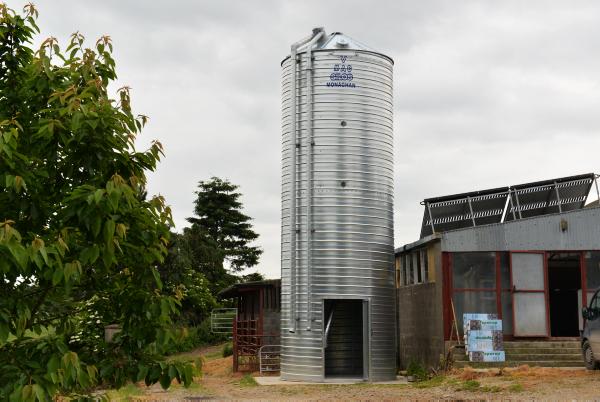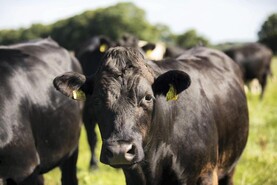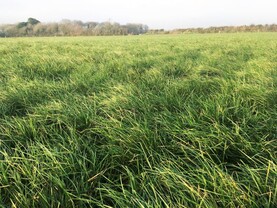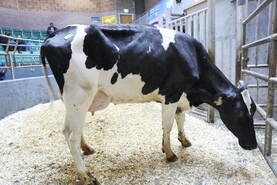A good water supply is extremely important on a modern dairy or beef farm. The water supply system must meet all of the water needs of the farm. Water is needed for livestock; whether housed or at grass. Water is needed for washing the milking machine, bulk tank, general washdown of the milking parlour, for milk pre-cooling and in the dwelling.
On most farms, the water system consists of a series of additions carried out over the years as requirements changed. These systems are challenged as it is but they will be totally inadequate where dairy expansion is envisaged. Only when the system fails to cope, such as during a dry summer, do people realise how marginal their system really is. Common problems on most farms centre on deficiencies in areas such as the water source, pumping plant, pipe sizes, ballcocks and troughs.
Small pipe sizes
This is still the most common problem with drinking water supply on farms. Even on farms where piping was laid recently, undersizing of pipes still occurs. It is pressure that drives water through the pipes. The speed of the water and the bore of the pipe determine the flow rate. As the water moves along the pipe, there is friction between the water and the internal surface of the pipe. This friction causes pressure loss. The extent of the pressure loss depends mainly on the pipe bore, the length of the pipe (distance from the pump), roughness of internal surface of the pipe and the flow rate required.
The pressure loss is directly proportional to the distance to be pumped, ie if you double the distance, you double the friction loss and vice versa. However, the friction loss is massively affected by pipe bore. There is a reduction in friction loss of 30 to 40 times in going from a particular pipe bore to double that bore (assuming that’s all that changes). Table 1 shows pressure loss due to friction in psi for a range of flow rates and pipe sizes for a pumping distance of 1,000m. From Table 1, for example, we can see that a 32mm pipe, 1,000m long, with a flow rate of 7.33 gals/min will “use up” 22psi of pressure due to friction loss.
As pressure loss is directly proportional to pipe length, we can also infer that for a distance of, say, 500m a 32mm pipe with a flow rate of 7.33 gals/min will use up 11psi of pressure due to friction loss. If enough pressure isn’t available to overcome friction loss, then flow rate drops off accordingly.
With regard to pipe size, it’s the size (diameter) of the pipe in relation to its cross-sectional area that’s important. A 20mm bore pipe has approximately twice the cross-sectional area of a 12.5mm pipe. Similarly, a 25mm pipe has four times the cross-sectional area of a 12.5mm pipe. So, if you double the pipe bore, you effectively quadruple the flow rate. This is the reason that correct pipe size is the main solution for poor water supply to troughs.
Increasing system pressure to maintain flow rate is not a good solution. It would be energy inefficient and would give rise to damaging levels of pressure, eg leaks. The problem can be solved using the correct pipe size.
Pipe size for herd size
The pipe size in relation to herd size is a question that is regularly asked. A rule of thumb often used is 25mm for up to 150 cows, 32mm for 150 to 300 cows and 40mm for over 300 cows (all internal diameter). Connections from the main line to the water troughs should be 20mm, 25mm and 32mm, respectively, and should not be longer than 50m. Farms differ in relation to herd size, pumping distance and lift required, so if it’s borderline between choosing a particular pipe size and the next size up then err on the high side. The price difference between a 25mm bore and a 32mm bore pipe is about 30c/metre, plus VAT.
The static or vertical head also affects flow. If pumping uphill, pressure is lost and, as a result, flow rate and vice versa for pumping downhill. Each 0.7m (2ft 4in) of a rise or fall will lose or gain 1psi in pressure, respectively. So, in a scenario where we have 50psi at the pump, 25psi lost due to friction and 15psi (35ft) lost due to static head (lift) we have, therefore, 10psi available at the ballcock jet.
Loop system
Installing a ring main or loop system will dramatically improve flow rates and even up the flow to troughs. A typical example is where there is a line of paddocks at either side of a farm roadway and there is a main water pipe through each line of paddocks. Then, by joining the ends of each main line, you effectively create a loop. This doesn’t add a lot of extra expense and it may mean that a pipe size one size smaller may be adequate. You can incorporate an existing water pipe as well if it’s in good condition and if it’s not too difficult to do.
Ballcock problems
It is very important to check the flow from the ballcocks to see if they are responsible for the low flow rates. The trough that has the lowest flow rate will often be the highest and the one furthest away. The jet size has a big impact on the flow rate into the trough. Table 2 shows the flow rate in litres per minute through a ballcock for different pressures and jet sizes. This is the pressure that is available at the jet when the tough is filling. We can see from this the huge effect that jet size has on flow rate. The typical jets in brass ballcocks are high pressure ones.
High pressure jets (1/8in) are very restrictive. Medium pressure jets (¼in) can easily be fitted in the brass ballcock and will increase flow rate a lot, as can be seen from Table 2. Even with high pressure the flow rate from the 1/8in jet is poor. The table shows that if you double the size of the jet you quadruple the flow but that you have to quadruple the pressure to only double the flow. Some of the new full flow ballcocks are 3/8in and ½in but many are bigger. They are usually fitted as standard to the new troughs.
You can improve the flow rate in brass-type ballcocks with the bigger jet – the only concern is that if the pressure is high, eg pumping downhill, some troughs may leak from time to time.
The ballcock jet size can only do so much – if the water flow rate from the pipe isn’t good in the first place, the jet size won’t matter.
Water supply
Livestock can survive for a period of time without food but they will not survive without water. Check water supply regularly. Do not leave animals without drinking water for more than 24 hours. Dairy/suckler cows in milk and finishing cattle on high concentrate diets should never be left without drinking water.
Daily water consumption by different types of stock is as follows: cows in milk, 60 to 100 litres; dry cows, 40 to 55 litres; beef cattle (300kg), 20 to 25 litres; beef cattle (600kg) 35 to 60 litres and 70 litres for dry finishing ration indoors. Lactating dairy cows must have ad-lib access to drinking water at all times. These animals cannot afford to be without water. When water intake is limited compared with unrestricted access to water, both feed intake and milk yield will be decreased. The dairy cow will consume 30% to 50% of their total water requirement within one hour of milking, especially evening milking. The release of oxytocin for milk letdown makes them thirsty.
Water flow rate
We can relate flow rate to herd size. A rule of thumb is to provide 50% of water needs in the three hours after milking, which translates into a flow rate of 0.2 litres per cow per minute. Table 3 shows how this pans out for different sized herds.
Water troughs
Cows can typically drink at the rate of 14 litres/minute from a trough. Position troughs to minimise walking distances to water and away from gaps and hollows; cows don’t like to walk more than about 250m to get a drink.
It will also avoid unnecessary smearing of grass going to and fro for water. Carefully consider trough location. Install troughs level to avoid leaks and dirty areas around troughs (cell count risk).
Troughs on roadways will slow cow movement and make roadways dirty. Check troughs regularly. Ballcock valves can get stuck, leaving an empty or overflowing trough.
Pipes can leak, make a mess and add considerably to water bills. Electric motors are expensive to maintain if running continuously. Use quality fittings and install isolation valves on pipelines for isolation of different sections of the paddock system. Consider installing a water flow meter near the supply pump. This will monitor water usage and it can be used to detect leaks






 This is a subscriber-only article
This is a subscriber-only article









SHARING OPTIONS: